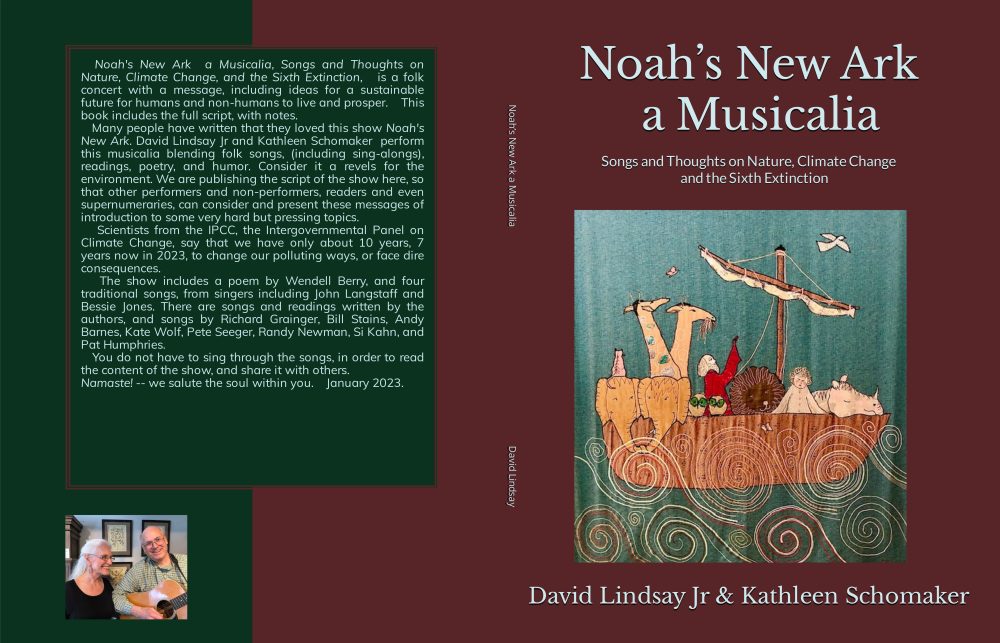“Half of the water flowing through regional river basins starts in so-called ephemeral streams. Last year, the Supreme Court curtailed federal protections for these waterways.” By Brad Plumer, June 27, 2024, NYT:
“Last year, the Supreme Court sharply restricted the federal government’s ability to limit pollution in small streams that sit dry for much of the year and fill up only after rainfall or snowmelt.
Now, a new study finds that those bodies, so-called ephemeral streams, are significantly more important to the nation’s waterways than often appreciated.
The research, published Thursday in the journal Science, estimates that 55 percent of the water flowing out of America’s river basins can be traced back to millions of ephemeral streams that flow only periodically. The findings suggest that the Supreme Court ruling, which rolled back protections for those streams, could leave large bodies of water vulnerable to pollution.
“Right now, we regulate larger waterways like the Hudson River, but a significant portion of that water is coming upstream from places that can no longer be regulated,” said Craig Brinkerhoff, who is a doctoral candidate at the University of Massachusetts Amherst and led the study.
For years, politicians, industry groups and environmentalists have argued over which bodies of water in the United States should fall under the jurisdiction of the Clean Water Act, a sweeping law, passed in 1972, that allows the Environmental Protection Agency to limit water pollution. While there’s consensus that the law applies to major rivers and lakes, there’s debate over whether federal protections should apply elsewhere, such as to nearby wetlands or streams that go dry for part of the year.
Environmentalists favor broad protections, arguing that these other bodies of water are important; homebuilders, some industry groups and conservatives oppose what they see as regulatory overreach.
In May 2023, the Supreme Court voted 5 to 4 to restrict the scope of the Clean Water Act, with the majority ruling that the law should apply only to “relatively permanent, standing or continuously flowing bodies of water,” as well as to wetlands that have “a continuous surface connection” to those waters.
That ruling effectively ended federal protections for up to 4.9 million miles of streams that flow only when it rains, according to officials at the E.P.A., which announced in August that it would follow the court’s guidance.
These temporary streams are often overlooked since they may look like unremarkable dry ditches for much of the year, said Jud Harvey, a senior research hydrologist for the United States Geological Survey, who wrote a separate commentary on the Science study. “But when it rains,” he said, “these streams convey a substantial amount of water” that ends up in rivers and lakes.
Mr. Brinkerhoff and his colleagues identified millions of ephemeral streams across the country and used detailed modeling to estimate how much water flows through them.
In the West, ephemeral streams flow only for four to 46 days per year on average, but contribute up to 79 percent of the downstream river flow, the study found. Ephemeral streams contribute roughly 55 percent of the flow in river basins across the contiguous United States, on average.
Mr. Harvey said he was surprised by the amount of water originating from ephemeral streams. “But it is a rigorous and detailed investigation using the best available data in the United States,” he said of the study.
Because so much water passes through these streams, the study notes, it matters greatly whether or not they are polluted. Sediments or excess phosphorus from fertilizer run off on farms could accumulate in dry channels until a heavy rainstorm picks up the pollutants and washes them into larger waterways.
Mr. Brinkerhoff said that the study did not try to quantify how much pollution was actually passing through those streams. That is a subject for future research. But, he said, these streams have a large influence on water quality.
Even if the E.P.A. can no longer regulate pollution in ephemeral streams, some states still try to do so, said Ciaran Harman, who is an associate professor of landscape hydrology at Johns Hopkins University and was not involved in the study. For instance, farmers can let grasses and other vegetation build up around ephemeral streams to limit erosion and prevent pollutants from ending up in waterways after storms. Yet state plans can vary widely, and it can often be difficult for states to coordinate on water regulations.
In the past, the E.P.A. often used new scientific research to update and sometimes expand the scope of water regulations, said Jon Devine, who leads the federal water policy team at the Natural Resources Defense Council, an environmental group. “Regulators would look at whether different bodies of water contribute to downstream water quality, and if so, should they be protected,” he said. “At bottom that’s a scien””tific inquiry.”
But after the Supreme Court decision, Mr. Devine said, the E.P.A.’s ability to revise those regulations has been significantly curtailed. “You’d really need Congress to step in,” he said.” -30-
David: Loved the title of this article in the paper copy Friday, “Amall Streams Vital to Big Waterways, Study Finds.” I could be caption under a cartoon of the obvious.
